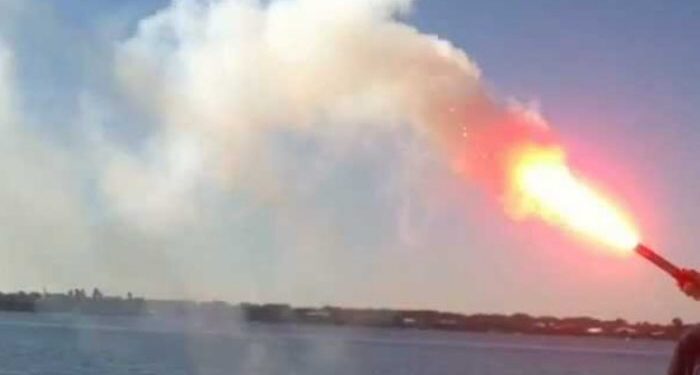The US Coast Guard provided guidance for acceptance of electronic visual distress signal devices (eVDSDs) that are evaluated as meeting the design and performance requirements of the recently published Radio Technical Commission for Maritime Services (RTCM) Standard 13200.0 for Electronic Visual Distress Signal Devices.
These eVDSDs have a new distress signal characteristic in the form of dual color cyan and red-orange S-O-S light sequence. Those eVDSDs that are tested by an accepted independent laboratory to meet the RTCM Standard 13200.0 will be accepted as equivalent to electric distress lights certified to 46 CFR 161.013 and may be used to comply with nighttime distress signal requirements in 33 CFR 175.130 as an alternative to currently available options.
Recommendations
- Manufacturers of distress signals should consider using reference (a) for future eVDSD evaluations.
- Independent laboratories interested in testing eVDSDs should apply for acceptance under approval series 161.013, according to 46 CFR 159.010-3.
- Laboratory test reports for candidate devices should be submitted to Commandant (CGENG-4), Commercial Regulations and Standards Directorate, Office of Design and Engineering Standards, Lifesaving and Fire Safety Division at [email protected] following the procedure in 46 CFR 161.013-17.
- eVDSDs that have previously been tested and accepted by letter from Commandant (CGENG-4) may continue to be accepted as meeting regulatory carriage requirements equivalent to electric distress lights that meet 46 CFR 161.013 for nighttime use only. Previous letters of acceptance remain in effect and are not impacted by this policy, provided that the device still complies with 46 CFR 161.013.
- This new distress signal characteristic and the availability of new eVDSDs should be incorporated into training courses for law enforcement, commercial vessel safety, and recreational boaters.
Effective from 21 December, eVDSDs that have been accepted as meeting the referenced RTCM 13200.0 standard may be carried to meet regulatory requirements for nighttime distress signals per 33 CFR 175.130. No signals (including pyrotechnic distress signals) are removed from the currently available options for distress signals as a result of this action.
- Any single distress signal should be considered only a part of a vessel’s complete distress system. Other communications, safety, and distress signal equipment should always be used as personal preparedness for a worse case distress situation.
- While not specifically required for recreational boats, having an EPIRB or 406 MHz PLB, GPS, and VHF-DSC radio can provide a major advantage for alerting response assets in a distress situation, making it easier to be located for rescue in a timely manner.


































































